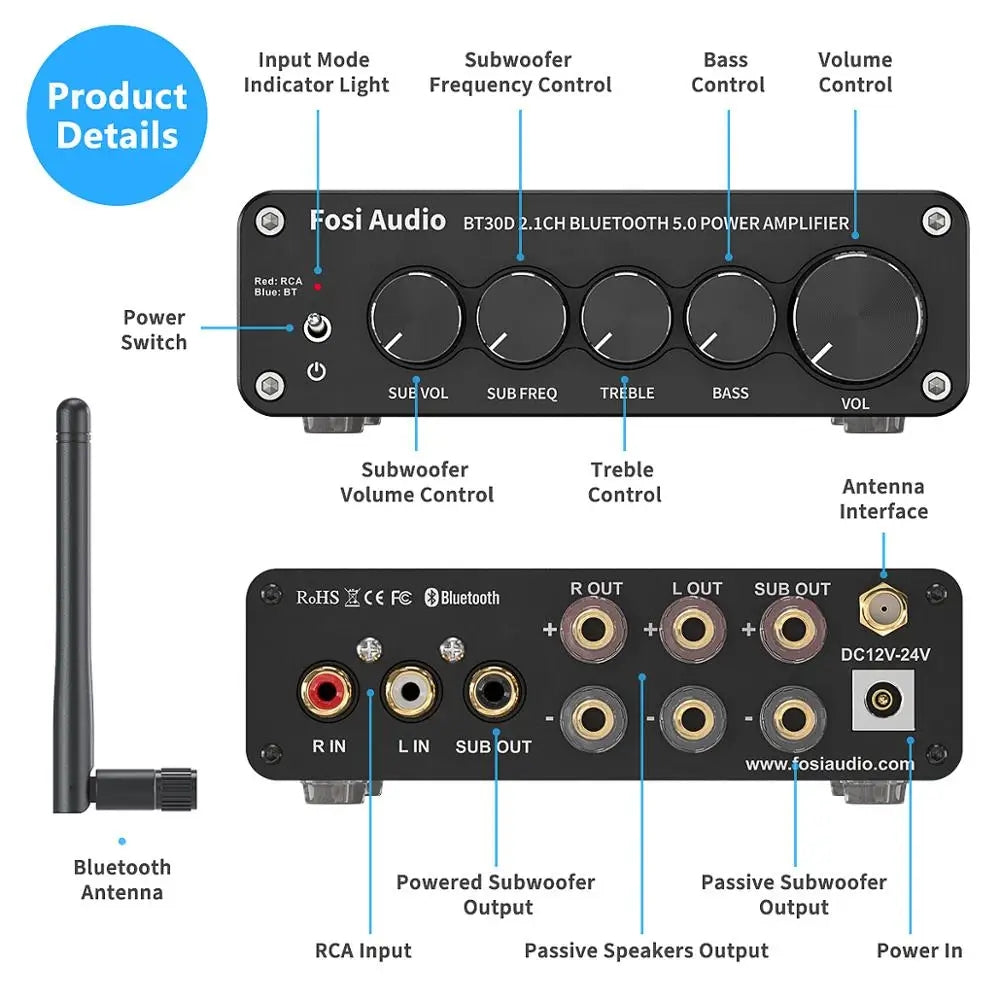
WiiM Amp streaming D/A integrated amplifier
Share
Life is not for Goldilocks. "Just right" is elusive. Every day, we face countless situations where our choices are either too many to navigate or too few to find satisfaction. Behavioral scientists call those dissatisfying alternatives "choice overload" and "choice deprivation," respectively (footnote 1).
I think choice overload may scare some audiophiles away from the glorious world of streaming, where the bulk and finite scope of a physical music-media collection can be traded for (or augmented by) many more listening choices. If you're willing to explore and choose, you can hear as deep and wide as most musical rabbit holes are likely to go, and then return to your favorite songs with a couple of finger-pecks on your phone.
For some people, all that choice is intimidating, paralyzing, overwhelming, highly stressful. That's no way to enjoy music! I sympathize. I'm not ready to leave physical media behind. But I am very happy in the streaming present. In fact, I urge the hesitant: Cast aside your fears and trepidations, sign up for a free month of Qobuz, Spotify, Tidal, Apple Music, you decide—then take it slow. At first, avoid browsing—just search for the music you want to hear. Try something new each day. Over time, you'll adjust to the overwhelming abundance. By the end of the month, especially with a full-resolution service like Qobuz, Tidal, or Apple Music+HD, you may not want to give it up. The future-present beckons loudly.
Which brings me to the subject of this review, the WiiM Amp (footnote 2). This is modernity: A company (LinkPlay, which is based in California) put a lot of thought and care into designing a neat-looking amplifier-gadget and the accompanying app, both branded WiiM, offering music fans the wide world of streaming. It can access digital files on your NAS server and connect to the interwebs by Wi-Fi or Ethernet cable. It was recently certified Roon Ready. For your other sources, there are optical and HDMI-ARC digital inputs, a USB flash drive port—even an analog-in connection.
What sets the WiiM Amp above most other similar-cost streaming options is that it doesn't need any external electronics and it doesn't have its own little speakers. Rather, it has an amplifier powerful enough (60Wpc into 8 ohms, 120Wpc into 4 ohms) to drive all but difficult passive loudspeaker loads—just add speakers and wires. The package even includes an Alexa-based voice-activated remote control, though the best way to run it is from the robust app, available for Apple and Android. The app includes many tone-shaping (DSP) options including graphic and parametric virtual equalizers plus 23 EQ presets. You can even use the WiiM Amp as an alarm clock, waking up to whatever music or internet radio station you want. And it transmits its streams over Bluetooth and AirPlay in case you want to listen on wireless headphones or on a wireless smart speaker in another room.
It sells for $299.
How is this possible? It comes down to clever design in-house, a good manufacturing partner in China, selling through Amazon, and the use of high-quality, commodity-priced parts.

What's it made of?
Housed in a 7.5" × 7.5" × 3" aluminum box with a plastic bottom, with rounded corners and a Mac mini look, the WiiM Amp is a multi-function gadget run by an ARM Cortex-A53 quad-core computer with 512MB of DRAM and another 512MB of flash memory. That's the brains of the operation. There is a volume/power/play/pause switch-knob on the front, plus, as mentioned, a remote control, which (setting aside voice control) is useful for turning the volume up and down, turning the unit on and off, and not much else.
At the amplifier's audio-conversion core is an ESS Sabre DAC 9018 K2 "Hyperstream" chip. At the amplification core is a Texas Instruments TPA 3255 class-D amplifier. Also inside the "shell," as WiiM calls it, are Wi-Fi and Bluetooth transceivers.
Having a real computer means that DSP functions can be modified and added, plus the firmware/OS can be updated over the interwebs. During the time I had the WiiM Amp in my systems, there were four firmware updates, the last of which finalized Roon Ready certification. That may add extra appeal for a current or aspiring multiroom Roon user desiring a second or third system for the bedroom, office, kitchen, or den.

On the back, you'll find what you'd expect: binding posts that work with spades, bananas, or wire; RCA jacks for the line-level analog input; a USB jack for adding storage; and TosLink and HDMI-ARC digital inputs. There is also an RCA output for a powered subwoofer, switchable on and off from the app. When a subwoofer is plugged in, the app allows a crossover point to be set anywhere in the range of 30–200Hz.
Based on my experiences, I think that's the WiiM's sweet spot: It's perfectly matched to a system with relatively sensitive standmount speakers and a powered subwoofer. With most music, if you can match the system so that the crossover point is on the higher end of the range—120Hz or higher—you won't run out of amplifier power before ear-bleeding SPLs.
I would not use this amplifier with hard-to-drive speakers; that's asking too much of it. But we'll see what JA's measurements show.

All the things it does
The key to this gadget is the app, called WiiM Home. Understand the app, and you'll know what the WiiM Amp can do. It goes layers deep, with a wealth of parameters and choices, allowing full control of the listening experience. Yes, it could trigger decision paralysis! It's well thought out, though, and one need not absorb all its functionality at once. I introduced myself to the WiiM Amp by unpacking it, hooking it up to a pair of Behringer Truth 2031P passive studio monitors, pushing the control knob/switch until lights started blinking, then pairing it by Bluetooth to my iPhone 15. In seconds, I was streaming music from Qobuz and Spotify's native apps.
Then I downloaded the WiiM app and read the quick-start instructions. I went through the setup process and paired it to my Wi-Fi network and to its remote control (which operates over Bluetooth), all using the phone. Then it bogged down during a firmware update. When it restarted, it couldn't find the Wi-Fi network.
When it comes to balky gadgets, this wasn't my first rodeo. The WiiM Amp remained paired to my phone via Bluetooth. So using the app, I shut it down. Outside the app, I unplugged it from the wall and let it cool its heels as I ate dinner.
I returned to it that evening and plugged it in. It found the network and began communicating with my phone over Wi-Fi. From then on, I was able to stream Qobuz through the WiiM app. (I had to sign onto Qobuz from within the app; the same would be true of the many other services available that stream directly.) Like other streaming gadgets, the WiiM Amp uses Spotify Connect and Tidal Connect to access those services. You control the music through the service's app, but it's the WiiM computer that's interacting with the service's servers, via technologies known as UPnP and DLNA; the app on your tablet or phone is merely the director.
I was up and running. I pushed the Browse button at the bottom of the app, and all my music, streamed and local, was at my fingertips. Want to choose a different input? Scroll to the bottom to select. At the top of the menu you'll see your home NAS server and its music library, plus the USB drive if you have plugged one in.
About that USB drive: It can be formatted as VFAT, NTFS, or EXT4. The USB socket can provide up to 650mA of current, enough to drive any thumb drive and many external SSDs but not enough to power mechanical hard drives that lack their own power supply.
To find music, select Artists, Albums, or Songs and search at the top of the screen. Go back to the Browse screen and scroll down to see the various streaming-service options, including the usual radio suspects: various BBC feeds, iHeartRadio, something called Calm Radio, Napster (which I thought was long dead).
After several hours playing with the WiiM app's functions, spread over several days, the firmware update that added Roon Readiness happened. To start using Roon, you must set up the server on your local network (if it isn't set up already), go to Settings > Audio on the Roon server, and Enable the WiiM Amp as a Device (endpoint). It had been a while since I used Roon, so I had to sign in again, on the computer and on my phone. All that done, I could operate the WiiM Amp from Roon on the computer or through the Roon app.
Things went as expected. I suspect that some potential buyers will use the WiiM app minimally, just for setup, then mostly use Roon to play music. Others will take advantage of the WiiM Home app's wide and deep functionality. More choices. Please remain calm.









